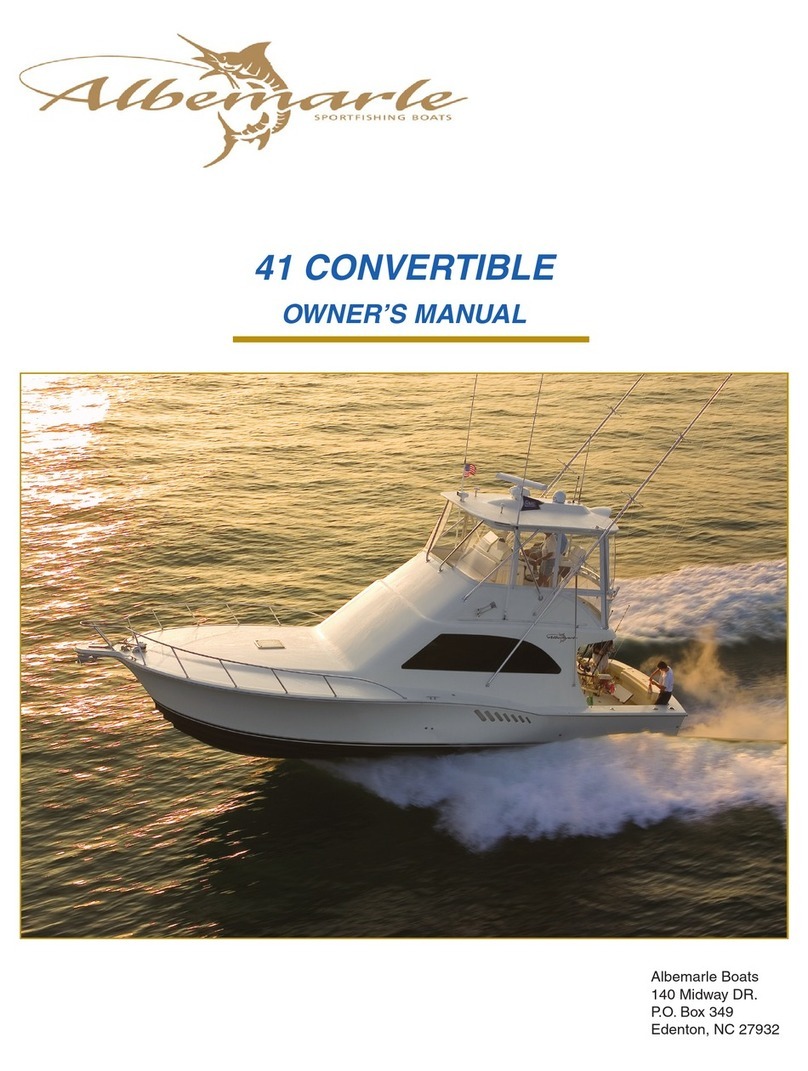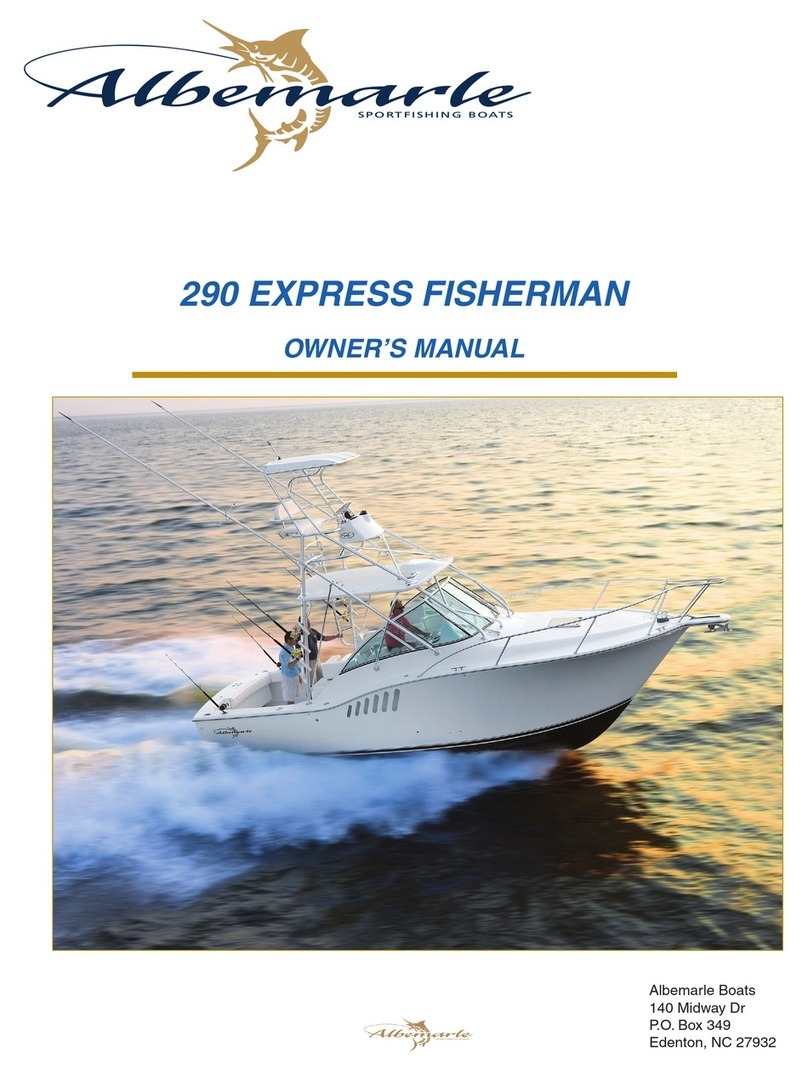
7
280 Series Express Fisherman
All instructions given in this book are as seen from the stern
looking toward the bow with starboard being to your right,
and port to your left. The information and precautions listed
in this manual are not all inclusive. It may be general in
nature in some cases and detailed in others. The suppliers of
some of the major components such as engines, pumps, and
electronics, provide their own owner's manuals which have
been included with your boat. You should read the informa-
tion in this manual and the manuals of other suppliers com-
pletely and have a thorough understanding of all component
systems and their proper operation before operating your boat.
REMEMBER-IT ISYOUR RESPONSIBILITYTOINSURETHATYOUR
BOAT IS SAFE FOR YOU AND YOUR PASSENGERS. ALWAYS
EXERCISE GOOD COMMON SENSE WHEN INSTALLING
EQUIPMENT AND OPERATINGTHE BOAT.
Warranty and Warranty Registration Cards
The Albemarle Limited Warranty Statement is included with
your boat. It has been written to be clearly stated and easily
understood. If you have any questions after reading the war-
ranty, please contact theAlbemarle Customer Service Depart-
ment.
Albemarle, engine manufactures, and the suppliers of major
components maintain their own manufacturer's warranty and
service facilities. It is important that you properly complete
the warranty registration cards included with your boat and
engine(s) and mail them back to the manufacturer to register
your ownership. This should be done within 15 days of the
date of purchase and before the boat is put into service. A
form for recording this information is provided at the begin-
ning of this manual. This information will be important for
you and service personnel to know, if and when you may need
service or technical information.
The boat warranty registration requires the Hull Identifica-
tion Number “HIN” which is located on the starboard side of
the transom, just below the rubrail. The engine warranty reg-
istration requires the engine serial number(s). Please refer to
the engine owner's manual for the location of the serial
number(s).
IMPORTANT:
All boat manufacturers are required by the Federal Boat Safety
Act of 1971 to notify first time owners in the event any defect
is discovered “which creates a substantial risk of personal in-
jury to the public.” It is essential that we have your warranty
registration card complete with your name and mailing ad-
dress in our files so that we can comply with the law if it
should become necessary.
Product Changes
Albemarle is committed to the continuous improvement of our
boats. As a result, some of the equipment described in this
manual or pictured in the catalog may change or no longer be
available. Albemarle reserves the right to change standard
equipment, optional equipment and specifications without
notice or obligation. If you have questions about the equip-
ment on your Albemarle, please contact the Albemarle Cus-
tomer Service Department.
Service
All warranty repairs must be performed by an authorized Al-
bemarle Dealer. Should a problem develop that is related to
faulty workmanship or materials, as stated in the LimitedWar-
ranty, you should contact yourAlbemarle dealer to arrange for
the necessary repair. If you are not near your dealer or another
authorized Albemarle dealer or the dealer fails to remedy the
cause of the problem, then contact Albemarle within 15 days.
It is the boat owner's responsibility to deliver the boat to the
dealer for warranty service.
IMPORTANT INFORMATION






























